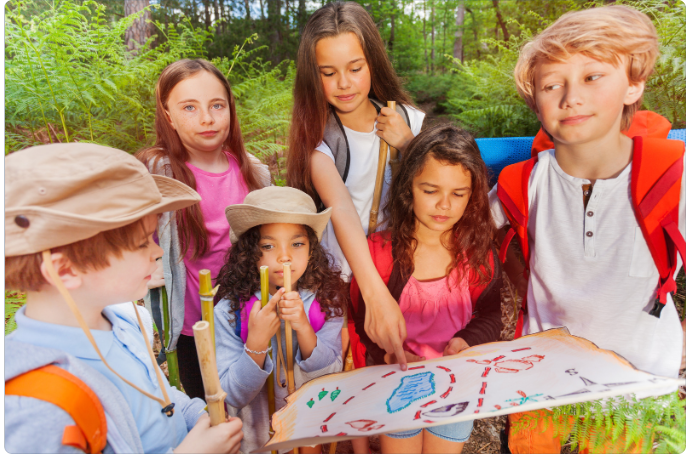Gear up, nature ninjas and eco-explorers! We’re diving into the wild with 23 insanely cool forest school activity ideas.
Imagine building dens that would make a bear jealous, hunting for nature’s treasures, and turning leaves into masterpieces.
We’re about to get our hands dirty and our feet muddy, learning the secrets of the forest in the best way possible – by living them!
Nature Scavenger Hunt:
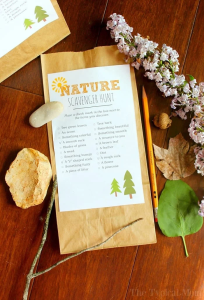
Create a list of natural objects such as leaves, rocks, animal tracks, or specific plants to find. Provide each participant with a checklist or a bag to collect their treasures. As they explore the forest, they will learn about different species, observe patterns in nature, and enhance their observation skills. It’s a fun and interactive way to connect with the natural environment while fostering a sense of exploration and discovery.
Tree Identification:

Take participants on a tree identification adventure to learn about the diverse species that inhabit the forest. Begin by teaching them the basic characteristics of common trees in the area, such as leaf shape, bark texture, and growth patterns. Then, venture into the forest and challenge participants to identify different trees using these characteristics.
Outdoor Art:

Unleash creativity with an outdoor art & crafts activity. Provide participants with art materials such as sketchbooks, colored pencils, and watercolors. Whether it’s capturing the intricate details of a leaf or painting a landscape, this activity allows individuals to express their connection with nature through art.
Survival Skills:
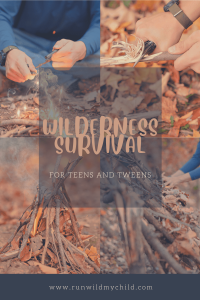
Teach participants valuable survival skills that are essential for thriving in the wilderness. Start with basic skills such as building a shelter using natural materials, starting a fire safely, or identifying edible plants. Demonstrate each skill and then allow participants to practice under guidance.
Nature Journaling:
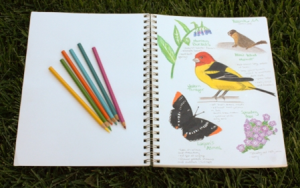
Introduce the practice of nature journaling, a reflective and introspective activity that encourages participants to document their observations, thoughts, and feelings while immersed in the forest. Provide participants with journals and encourage them to find a quiet spot to sit and reflect on their surroundings. They can record their observations of plants, animals, sounds, and smells, as well as their own emotional responses.
Bird Watching:

Equip them with binoculars, bird identification guides, and notebooks. Encourage them to observe and identify different bird species in the forest, noting their unique characteristics and behaviors. Help participants understand the importance of birds in the ecosystem and their role as indicators of environmental health.
Nature Photography:

Inspire participants to capture the beauty of the natural world through photography. Encourage them to bring their cameras or smartphones and explore the forest, seeking out intriguing subjects, textures, patterns, and light. Teach them basic photography techniques such as composition and lighting. Participants can then share and discuss their photographs, fostering a deeper connection to nature and promoting artistic expression.
Stream Exploration:
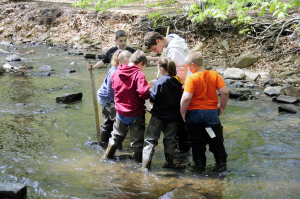
Take participants on an adventure along a forest stream or river. Provide them with waterproof boots and nets for safe exploration. Encourage them to examine the water, look for aquatic insects, and carefully catch and release small creatures. Discuss the importance of clean water sources and the role of streams in supporting a variety of wildlife.
Nature Games:

Introduce a variety of nature-themed games that encourage physical activity in kids, teamwork, and problem-solving. For example, organize a game of “Animal Olympics,” where participants mimic the movements and behaviors of different animals. Or set up a “Camouflage Challenge,” where individuals try to hide and blend in with their surroundings.
Forest Storytelling:

Gather participants in a cozy spot amidst the trees and invite them to share and listen to stories inspired by the forest. Encourage individuals to use their imagination to craft tales featuring the creatures, plants, and landscapes they encounter. This activity fosters creativity, oral communication skills, and a deep connection with nature through storytelling.
Leaf Rubbings:

Engage participants in the art of leaf rubbings, a simple yet delightful activity that explores the textures and patterns of leaves. Provide participants with paper, crayons, or colored pencils, and encourage them to place a leaf underneath the paper and gently rub the crayon or pencil over it. As the leaf’s shape and details transfer onto the paper, participants will marvel at the intricate designs found in nature.
Nature Weaving:

Encourage participants to create nature-inspired weavings using natural materials found in the forest. Provide them with twigs, grass, leaves, and yarn or string. Instruct participants to weave the materials together to form intricate patterns or designs. This activity encourages creativity, dexterity, and an understanding of how different elements in nature can be interwoven.
Nature Obstacle Course:
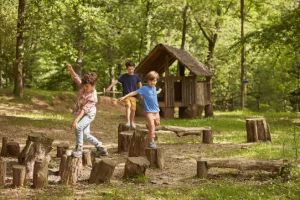
Set up a nature-themed obstacle course in the forest, challenging participants to navigate through various natural obstacles. Incorporate elements such as fallen logs to climb over, tree branches to crawl under, and muddy patches to jump across. The obstacle course promotes physical fitness, problem-solving, and resilience as participants navigate their way through the challenges presented by the forest environment.
Forest Meditation:

Create a tranquil and serene space within the forest for participants to engage in forest meditation. Guide them through a mindfulness activity that encourages deep relaxation, heightened sensory awareness, and a connection with nature. Encourage participants to close their eyes, listen to the sounds of the forest, feel the breeze on their skin, and take deep breaths to inhale the fresh forest air.
Environmental Clean-up:

Equip participants with gloves, trash bags, and litter pickers, and assign different areas of the forest for them to clean. Instruct participants to collect and dispose of any litter they find responsibly. Along the way, engage in discussions about the importance of keeping natural spaces clean and the impacts of litter on wildlife and ecosystems.
Animal Tracking:

Engage participants in the art of animal tracking, where they learn to identify and interpret animal footprints and signs in the forest. Teach them about different tracks, scat, and other indicators of animal presence. Provide plaster of Paris or clay for making casts of tracks they find. Participants can explore the forest, looking for tracks and clues left behind by various wildlife species.
Forest Gardening:

Introduce participants to the concept of forest gardening, a sustainable and ecologically-friendly approach to growing food. Explore the forest and identify edible plants, medicinal herbs, and wild berries. Teach participants about the principles of forest gardening, such as companion planting and permaculture. Engage them in planting and tending to a small forest garden plot, where they can learn about plant diversity, organic gardening practices, and the benefits of working with nature to create a productive and resilient food ecosystem.
Sensory Nature Walk:

Guide participants on a sensory nature walk, encouraging them to engage their senses and truly immerse themselves in the forest environment. Along the way, prompt them to touch different textures, smell various scents, listen to the sounds of nature, and observe the colors and patterns of the forest. Encourage participants to share their sensory experiences and reflections.
Nature Yoga:

Engage participants in a calming and rejuvenating nature yoga session amidst the serene beauty of the forest. Lead them through a series of gentle stretches, poses, and breathing exercises that promote relaxation and mindfulness. Encourage participants to connect with the natural elements around them, such as imagining themselves as trees swaying in the wind or animals moving gracefully through the forest.
Forest Insect Study:

Embark on a fascinating exploration of the tiny inhabitants of the forest by conducting an insect study. Provide participants with magnifying glasses, bug catchers, and identification guides. Encourage them to observe and document different insects they encounter, noting their characteristics and habitats. Discuss the vital role insects play in the forest ecosystem and the inter-dependencies between insects and other organisms.

